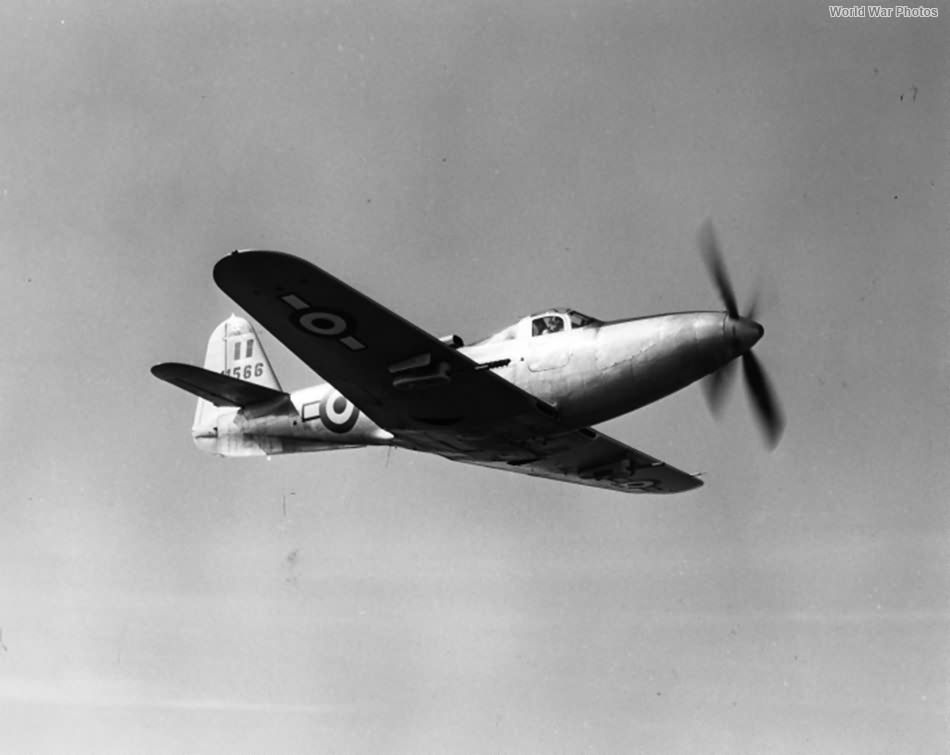The P-63C Kingcobra was the second and final major production variant of the Bell P-63 series. Building on the design and capabilities of the earlier P-63A, the P-63C introduced minor but notable improvements. It was primarily produced for use by the Soviet Union during World War II, under the Lend-Lease program, and also saw limited service with the Free French forces.
Key Features and Modifications of the P-63C:
Engine and Powerplant:
- The P-63C was powered by the Allison V-1710-117 engine, delivering 1,355 horsepower. This represented a slight increase in power compared to the V-1710-95 engine used in the P-63A.
- A distinctive feature of the P-63C was the ventral fin added under the aft fuselage. This modification improved stability, particularly at higher speeds and during steep dives.
Production Blocks:
- P-63C-1-BE: The initial block consisted of 215 aircraft. These units had the same wingspan of 38 feet, 4 inches as the P-63A, despite erroneous reports suggesting a reduced wingspan.
- P-63C-5-BE: The majority of P-63Cs came from this block, with 1,012 aircraft produced. The differences between the -1 and -5 production blocks were minimal, primarily involving internal adjustments and optimizations.
Armament:
- The armament configuration remained consistent with that of the P-63A, featuring a 37-mm cannon mounted in the nose with four .50-caliber machine guns—two in the nose and two in wing pods. The Soviet Union often received these aircraft without the wing-mounted .50-caliber gun pods.
Service and Deployment:
- Soviet Union: The vast majority of the P-63C Kingcobras were supplied to the Soviet Union, where they were used effectively on the Eastern Front. Soviet pilots appreciated the aircraft’s durability, firepower, and the effectiveness of the 37-mm cannon in air-to-air combat and ground-attack roles.
- Free French: About 300 P-63Cs were delivered to the Free French forces, who used them primarily for coastal patrol duties in Africa and Italy. Some of these aircraft remained in service as late as 1948, during the early stages of the Indochina conflict.
Manned Target Variant:
- The RP-63C-2-BE was the manned target version of the P-63C, with 200 units produced for the USAAF. These aircraft were similar to the RP-63A variants but featured the V-1710-117 engine from the P-63C. Unlike the combat version, the RP-63C-2-BE did not include the ventral fin.
Performance:
- Maximum Speed: 410 mph at 25,000 feet, the same as the P-63A, which was significant for an aircraft of its class.
- Rate of Climb: The P-63C took 8.6 minutes to reach 25,000 feet, slightly slower than the P-63A, likely due to the increased weight.
- Ceiling: The operational ceiling was 38,600 feet, which, while slightly lower than the P-63A, still provided excellent high-altitude performance.
- Range: The P-63C had a maximum range of 2,100 miles and a combat range of 320 miles, with an internal fuel capacity of 128 gallons and the ability to carry up to 225 gallons of external fuel.
Dimensions and Weight:
- Wingspan: 38 feet 4 inches
- Length: 32 feet 8 inches
- Height: 12 feet 6.25 inches
- Weight: The empty weight was 6,800 pounds, with a gross weight of 8,800 pounds, and a maximum take-off weight of 10,700 pounds.
The P-63C Kingcobra, while not a revolutionary leap from the P-63A, represented a refined and slightly more powerful version of the aircraft, with enhancements in stability and combat readiness. Its widespread use by the Soviet Union during World War II underlines its effectiveness and reliability. Although it was the final significant production model of the Kingcobra series, it left a lasting legacy as a robust and versatile fighter that contributed to the Soviet Union’s efforts in the war.
